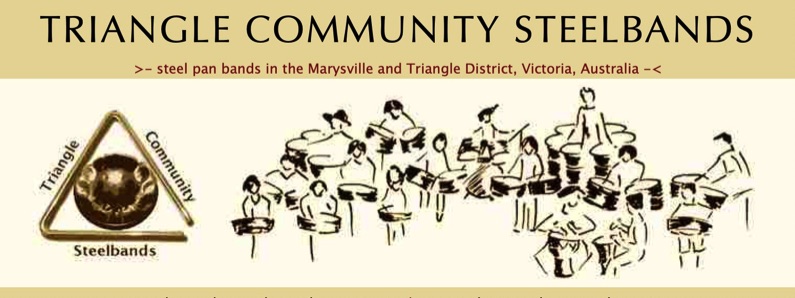Story of the Pans
The Trinidad Story
French planters and their slaves emigrated to Trinidad during the French Revolution (1789) from Martinique, including a number of West Africans, and French creoles from Saint Vincent, Grenada and Dominica, establishing a local community before Trinidad and Tobago were taken from Spain by the British. Carnival had arrived with the French, and the slaves, who could not take part in Carnival, formed their own, parallel celebration called canboulay.
Drumming was used as a form of communication among the enslaved Africans and was subsequently outlawed by the British colonial government in 1783. African slaves also performed during Mardi Gras celebrations, joining the French that had brought the tradition to the island. The two most important influences were the drumming traditions of both Africa and India. The instrument's invention was therefore a specific cultural response to the conditions present on the islands of Trinidad and Tobago.
Stick fighting and African percussion music were banned in 1880, in response to the Canboulay Riots. They were replaced by bamboo sticks beaten together, which were themselves banned in turn. In 1937 they reappeared, transformed as an orchestra of frying pans, dustbin lids and oil drums. These steelpans are now a major part of the Trinidadian music scene and are a popular section of the Canboulay music contests. In 1941, the United States Navy arrived on Trinidad, and the panmen, who were associated with lawlessness and violence, helped to popularize steel pan music among soldiers, which began its international popularization.
The first instruments developed in the evolution of steelpan were Tamboo-Bamboos, tunable sticks made of bamboo wood. These were hit onto the ground and with other sticks in order to produce sound. Tamboo-Bamboo bands also included percussion of a (gin) bottle and spoon. By the mid-1930s, bits of metal percussion were being used in the tamboo bamboo bands, the first probably being either the automobile brake hub "iron" or the biscuit drum "boom". The former replaced the gin bottle-and-spoon, and the latter the "bass" bamboo that was pounded on the ground. By the late 1930s their occasional all-steel bands were seen at Carnival and by 1940 it had become the preferred Carnival accompaniment of young underprivileged men. The 55-gallon oil drum was used to make lead steelpans from around 1947. The Trinidad All Steel Percussion Orchestra (TASPO), formed to attend the Festival of Britain in 1951, was the first steelband whose instruments were all made from oil drums. Members of TASPO included Ellie Mannette and Winston "Spree" Simon. Hugh Borde also led the National Steel Band of Trinidad & Tobago at the Commonwealth Arts Festival in England, as well as the Esso Tripoli Steel Band, who played at the World’s Fair in Montreal, Canada, and later toured with Liberace and were also featured on an album with him.
Source: Wikipedia
